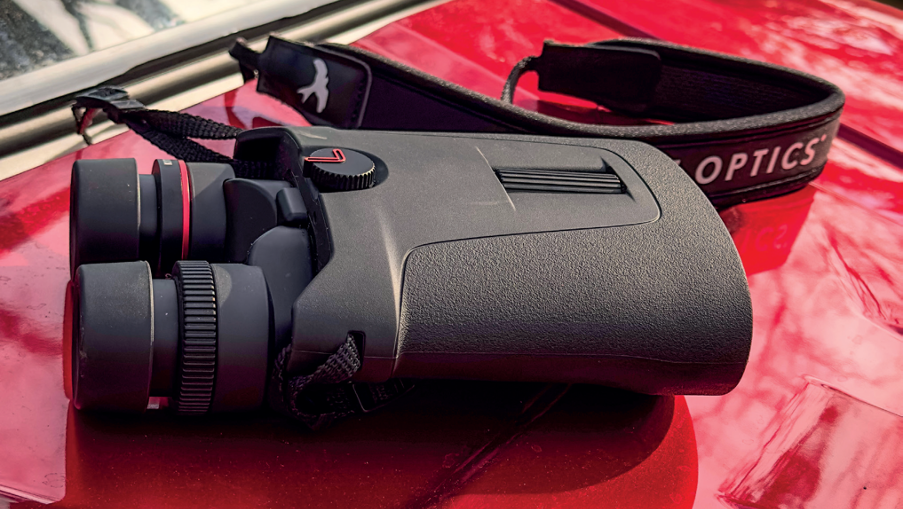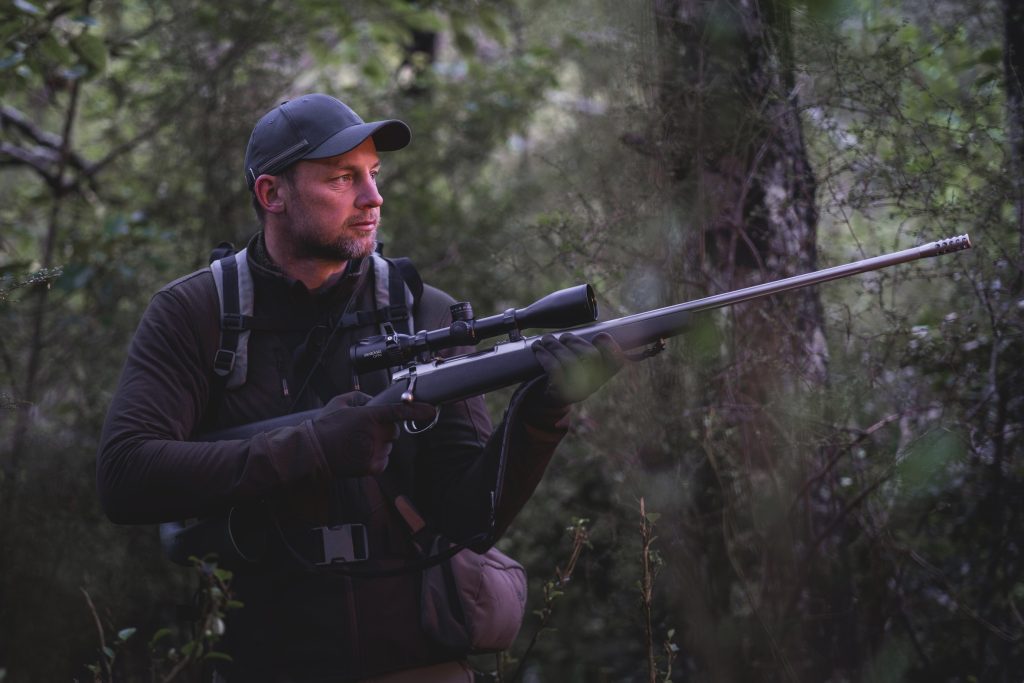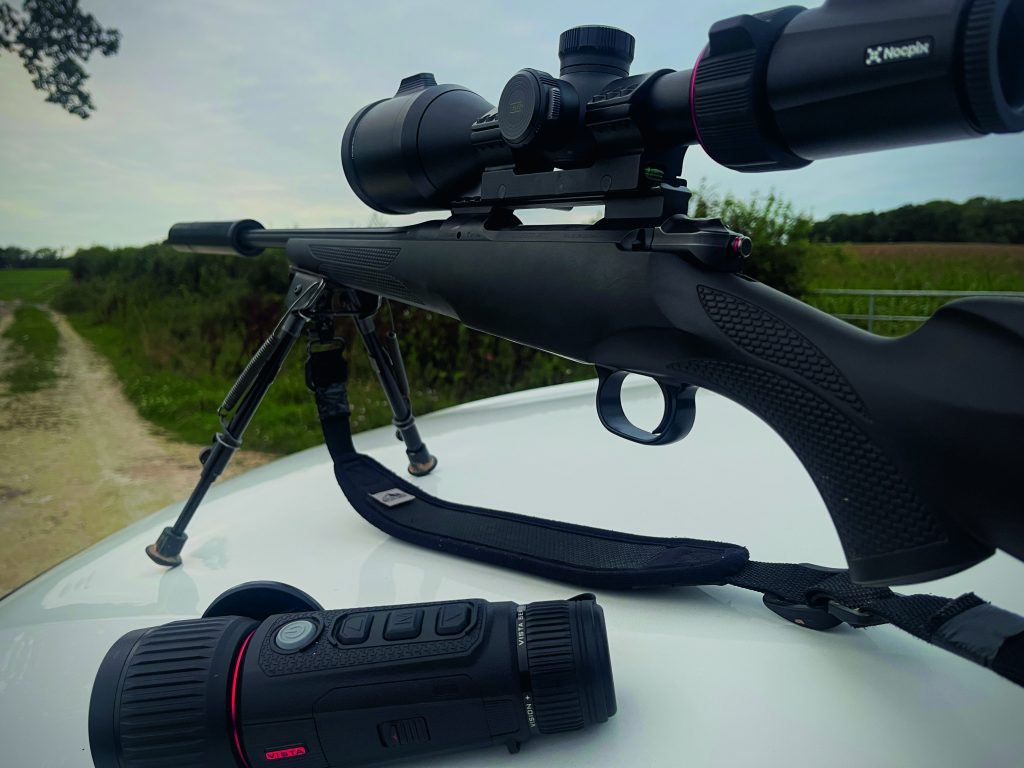Kite APC Stabilised Binoculars: a game-changer in optics
Paul Austin falls in love with a new Kite APC unit – a pair of optically stabilised binoculars that will transform your daytime shooting

I’ll be honest: reviewing binoculars can be a tricky business. The trouble is that it’s all very subjective, with the difference between a great pair and a really good pair often being a relatively fine margin – which can be difficult to convey in print. My preference leans towards brightness; for other users it’s clarity or contrast. That said, with all other things being equal it’s often the field of view that becomes the deciding factor. In short, binos are perhaps the ultimate “try before you buy” shooting accessory, as often it’s only a side-by- side comparison that enables you to appreciate the subtle differences when it comes to quality glass.
However, that may well be set to change. I recently received an invitation from Browning to test its new X-Bolt 2 centrefire up in Scotland – lowland stalking for roe followed by a hind cull the following day. I read the invitation eagerly, almost ignoring the mention of the new copper ammo we’d be using and the Kite binos that had been bundled into the presentation. These press junkets offer the bigger brands a chance to showcase a whole host of products, both in-house and from their affiliates.
Obviously the new rifle was the star of the show, but it was a member of the supporting cast that really shocked the assembled hacks — and indeed the beatkeepers and gillies on the Gordon Estate, our host for the event.
Revolutionary
Put simply these new binos are, quite frankly, revolutionary. They employ mechanical image stabilisation to eradicate shake. This approach should not be confused with digital stabilisation. This is not a digital product – the image is direct from the glass and is indistinguishable from that of traditional day binoculars. They are bright, clear, have great definition and present a very nice, flat image with plenty of contrast. And they are free of the shake that plagues traditional handheld binoculars.
To put things into perspective, at the end of the event there was something of a scrum as all the attending journalists scrambled to try to secure a pair for review. More importantly, this scrum also involved the beatkeepers and gillies on the estate, who were just as blown away by these binoculars as the assembled press pack. Scottish gillies and journos from across Europe aren’t easy to impress when it comes to guns, gadgets and gizmos – but impressed they truly were.
Adrien Koutny is the main man at Browning when it comes to impressing the press, and I could tell from his wry smile as we arrived at the range to zero our rifles that he had something up his sleeve. The rifle was never going to disappoint – a new gun never reaches this stage unless it’s been thoroughly tested. However, it was the glint in his eye when he handed over the binos that caught my attention.
Adrien was careful to hand them out powered-down and the reaction was exactly what you’d expect from a first encounter with a very nice pair of binos. He then urged us to flick the switch that activates the image stabilisation. The reaction was instant and unanimous. Wow! Don’t forget, this was a bunch of grizzled old hacks, most of whom have used or reviewed all manner of shooting optics. These new Kite APC Stabilized binos really are something special, and I’ll go out on a limb and say that they may well offer a leap in performance – in terms of day optics – on a par with that of thermal technology.
Special effects
At this point you may be thinking this all sounds a bit too advertorial. Surely they can’t be that revolutionary? Trust me, they are amazing. So here’s my favourite metaphor to convey the leap in performance on offer. In movies, a classic special effect is to time-ramp a sequence at a crucial point to enhance the action and drama of a scene, seamlessly transitioning from real- time to slo-mo. That’s what it feels like when you power on the stabilisation.
Instead of fighting the handheld shake of traditional binos in a desperate attempt to focus on the detail, the stabilisation instantly takes away all the physical, visual and mental effort involved in trying to process a shaky image. You instantly focus on the detail as the image glides over the scene. Obviously it’s all in real-time, but the feeling is similar – you find yourself gazing into the image, not at it. Spotting holes in the targets down range was obvious and instantaneous, as the guesswork involved in discerning fine detail at distance was completely eradicated.
There are obvious applications for this tech across all manner of shooting sports and indeed in civilian life. But for stalkers struggling to judge the sex and condition of deer at distance, it’s a transformative experience. Spotting from a moving vehicle is transformed, even over rough ground. I hate this phrase, but they truly are a game-changer in terms of day optics.
Pleasure
There’s also a less obvious benefit in terms of fatigue. Staring through binos, and the constant mental, visual and physical effort required while struggling to focus on fine detail with unsupported binos, can be exhausting. This device, and the engineering behind it, makes endless glassing a pleasure rather than a chore. If my slo-mo analogy is hard to grasp, a more typical example would be a DSLR camera that features optical image stabilisation – some smartphones offer a similar function, as does a camera mounted on a gimbal. All the above are designed primarily to smooth movement of the frame itself, but in our case the benefit is the ability to effortlessly focus on the detail within the image through a true optical rather than digital platform.
Stunning
Although the design looks a little different, the basic binocular functionality is as expected. There is plenty of dioptre adjustment, twist-up eye cups, a simple push-pull adjustment for ocular distance and a focus wheel. That’s it, aside from the all-important top wheel to engage the stunning image stabilisation.
Is there a compromise? Yes, to a certain extent – the 88% light transmission rather than the 90%- plus of alpha glass – but that’s a trade I’d make in a heartbeat for the added functionality and performance these binoculars offer. An absolute must-try before buying your next pair of binos, but very highly recommended.
Related Articles
Get the latest news delivered direct to your door
Subscribe to Rifle Shooter
Elevate your shooting experience with a subscription to Rifle Shooter magazine, the UK’s premier publication for dedicated rifle enthusiasts.
Whether you’re a seasoned shot or new to the sport, Rifle Shooter delivers expert insights, in-depth gear reviews and invaluable techniques to enhance your skills. Each bi-monthly issue brings you the latest in deer stalking, foxing, long-range shooting, and international hunting adventures, all crafted by leading experts from Britain and around the world.
By subscribing, you’ll not only save on the retail price but also gain exclusive access to £2 million Public Liability Insurance, covering recreational and professional use of shotguns, rifles, and airguns.
Don’t miss out on the opportunity to join a community of passionate shooters and stay at the forefront of rifle technology and technique.




